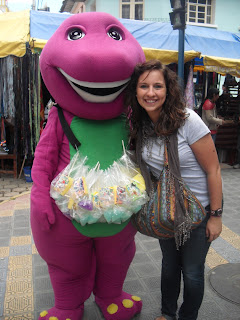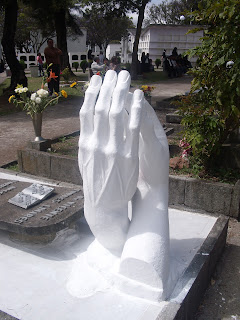 |
| Miracles Happen |
As our time in Ecuador is winding down, I am beginning to feel a rush of emotions. I cannot wait to see my family and friends at home. I am so excited to share my stories and pictures with them. I cannot believe that in 8 days we will be traveling home. Where did the time go? When I look back and think about the last nine weeks, it amazes me by how much I have been able to see, do, and experience. The people I have met on this trip are amazing. I know that on December 9th, we are going to go our separate ways. However, we will be able to look back and remember each other because we shared this experience together.
While I am thrilled to get home and see my friends and family, I am also very sad to leave. I did not expect to feel this sad. I love my host family, and we have become close throughout my weeks in Cuenca. It breaks my heart when I think about how I may never see them again. Every night, I help Macayla with her English homework, and I often play games with Anabel and Ellie. We spend so much time putting puzzles together and just making faces at each other. I love helping Macayla with her English because she seems so happy when I help her. I am sad that I have to say bye to them in a week. They all have had such an unforgettable impact on my life. I hope that I was able to influence their lives, even if it is in the smallest way possible.
I cannot imagine my life without this trip. I feel like a completely different person. I never thought I would realize so much about myself and other people around me. I am so thankful to have this experience. Engulfing myself in another culture was the most wonderful adventure I have ever had. I do not mind being a ‘gringo’ because it allowed me learn the way Ecuadorians live their lives. Also, I was able to share stories of my life and culture with many Ecuadorians. My host family and I have shared many stories that really help to shape the way we think of the other’s country. I love that I was able to live life as an Ecuadorian for a short period of time. Traveling to another country is so rewarding, and it is the best way to learn about another culture. In today’s globalized world, it is most important to experience cultural differences firsthand. While many people do not get the opportunity to travel around the world, those that do have the chance should run wild. Trust me, if you get the opportunity you will not be disappointed!
 |
| We earned A's in Spanish!!!!! |
 |
| My amazing host mother! I will miss her dearly. |



































